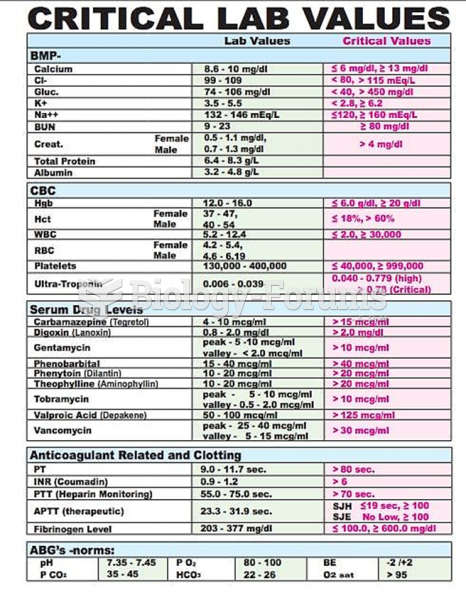|
|
|
Chronic necrotizing aspergillosis has a slowly progressive process that, unlike invasive aspergillosis, does not spread to other organ systems or the blood vessels. It most often affects middle-aged and elderly individuals, spreading to surrounding tissue in the lungs. The disease often does not respond to conventionally successful treatments, and requires individualized therapies in order to keep it from becoming life-threatening.
Patients who have undergone chemotherapy for the treatment of cancer often complain of a lack of mental focus; memory loss; and a general diminution in abilities such as multitasking, attention span, and general mental agility.
The ratio of hydrogen atoms to oxygen in water (H2O) is 2:1.
The immune system needs 9.5 hours of sleep in total darkness to recharge completely.
For pediatric patients, intravenous fluids are the most commonly cited products involved in medication errors that are reported to the USP.







